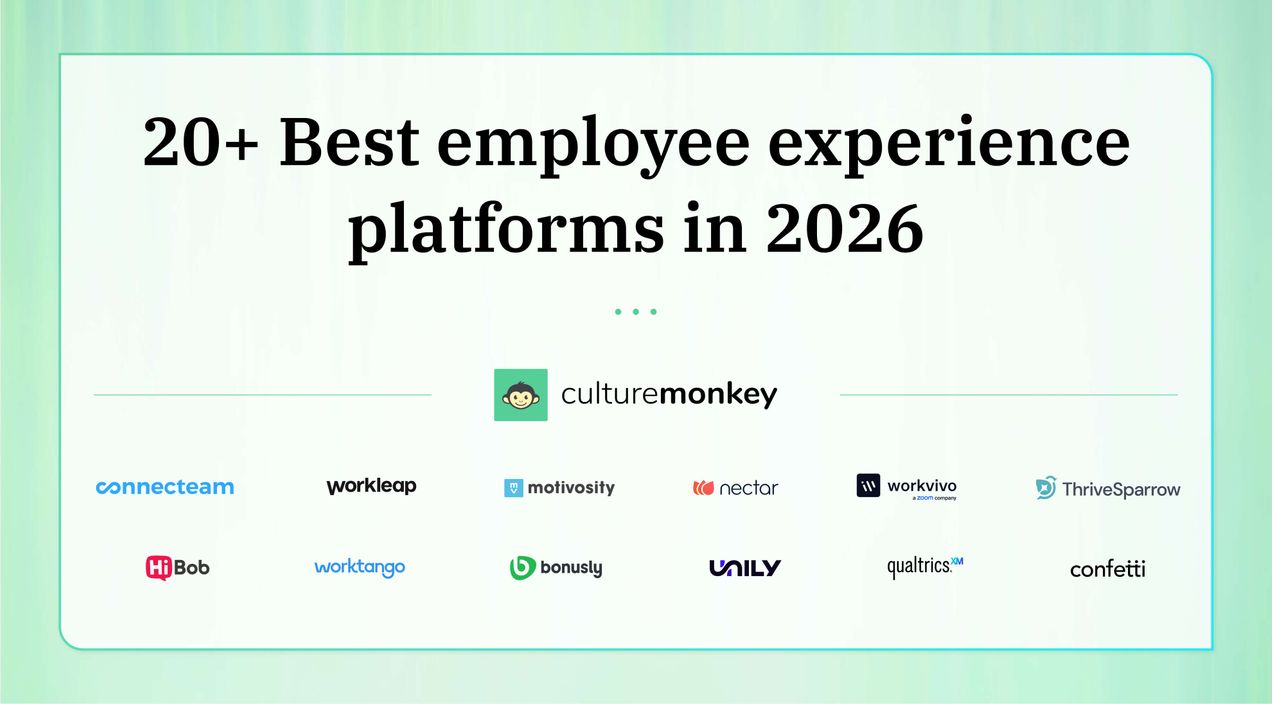What is the digital employee experience: Definition, examples, and top tools
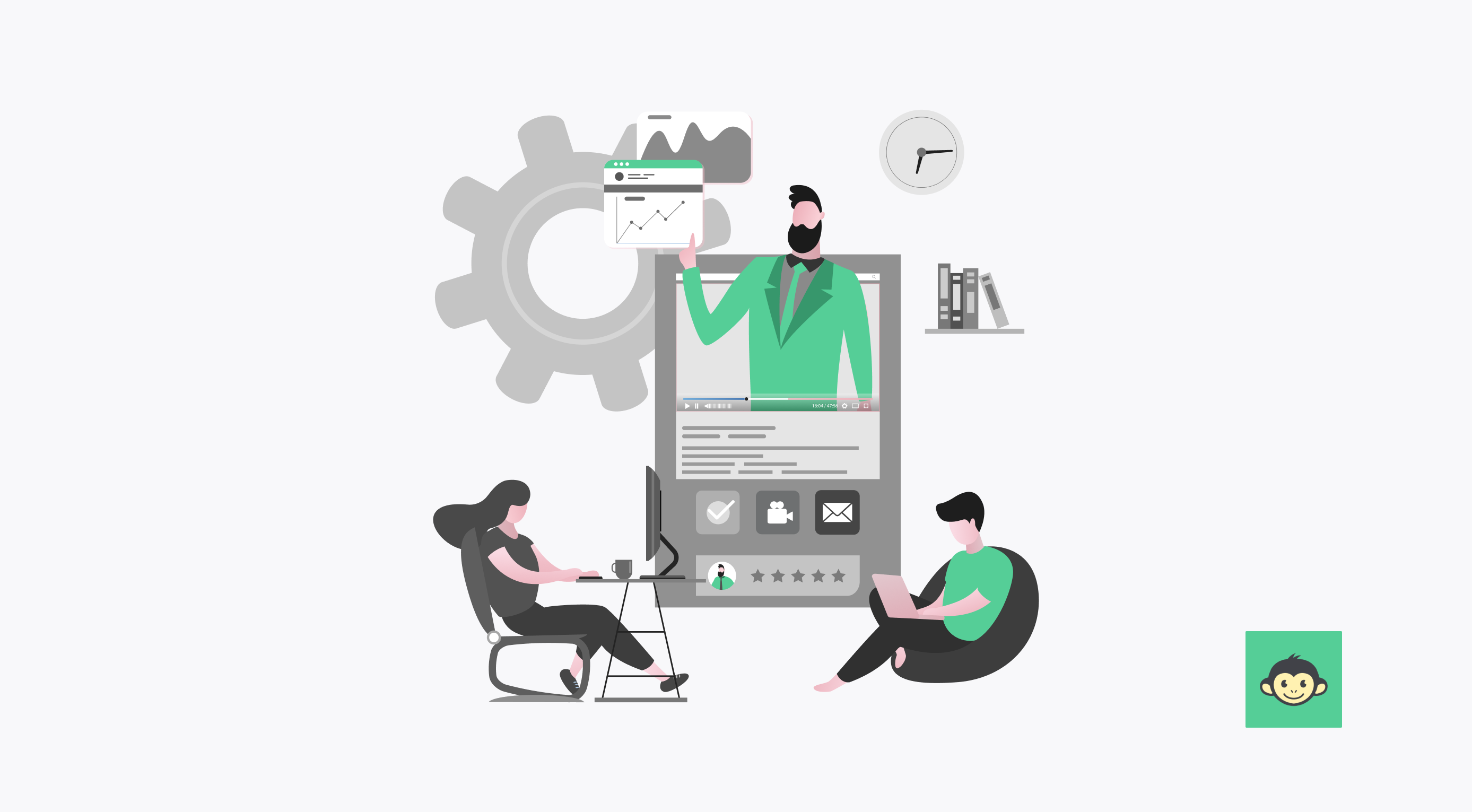
Welcome to the digital age, where every aspect of our lives, including work, is becoming increasingly intertwined with technology.
In this blog, we'll dive into the exciting world of the digital employee experience (DEX). We'll start by defining what DEX is, explore some real-life examples to make it relatable, and then round up with a list of top tools to enhance the digital employee experience. So, grab your digital toolkit, and let's get started on this great digital employee experience journey!
What is the digital employee experience?

To kick things off, let's break down what the digital employee experience (DEX) actually means. DEX is all about the interaction between employees and the digital tools, systems, and processes they use in the workplace. It encompasses every digital touchpoint an employee has during their workday, from logging into their computer to collaborating on projects, and even engaging with HR processes.
Let’s use an example. Imagine you're an employee at a cutting-edge tech company. Your DEX might include using a sleek project management tool like Asana to track your tasks and collaborate with team members seamlessly. When you need IT support, you effortlessly log a ticket through a user-friendly portal or a dedicated ticketing system.
Your company's HR system makes requesting time off a breeze, with automated approvals and a user-friendly interface. This is a prime example of a positive digital employee experience in action.
What is digital employee experience management?
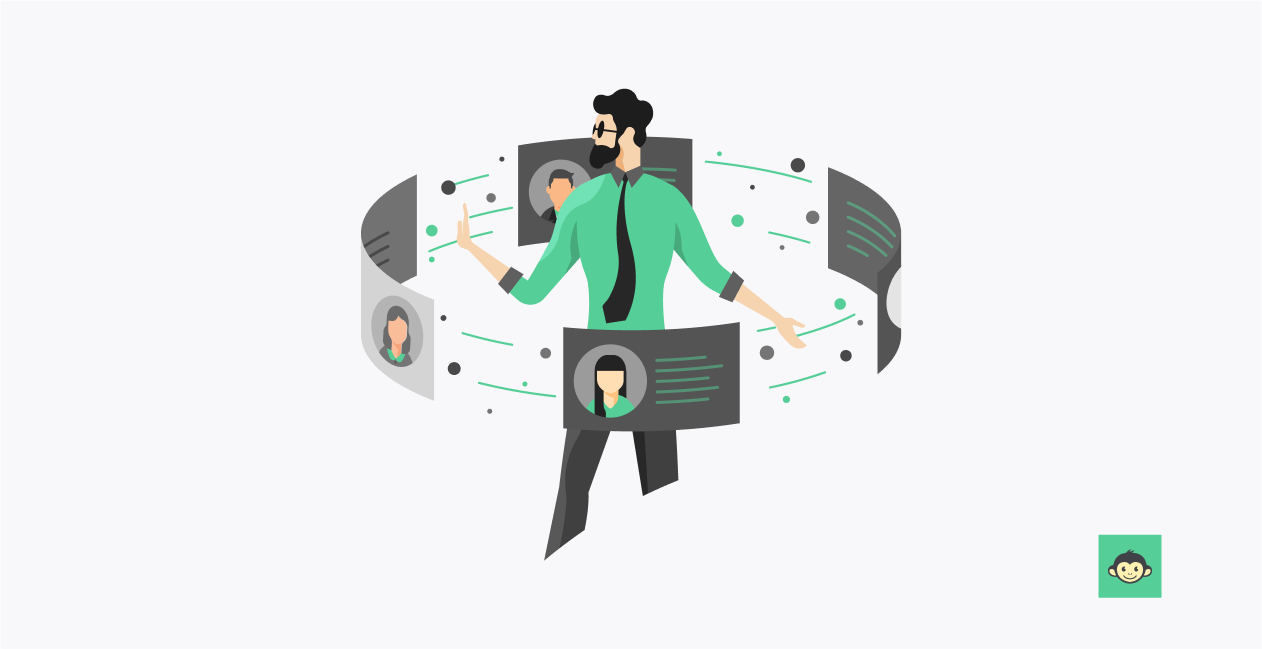
Now that we've established what the digital employee experience (DEX) is, let's shift our focus to the critical aspect of managing it effectively. Digital Employee Experience Management, or DEXM, is the art of orchestrating and optimizing all the digital components that make up the digital employee experience solution.
Think of DEXM as the conductor of an orchestra. Just as a conductor ensures that each musician plays their part in harmony, DEXM ensures that all the digital tools, systems, and processes in your workplace work seamlessly together to create a symphony of efficiency and satisfaction for employees.
For instance, your company may use various tools like Slack for communication, Salesforce for customer relationship management, and Microsoft Teams for collaboration. DEXM ensures these tools integrate smoothly, reducing the friction in an employee's day-to-day activities.
How does digital employee experience assessment work?
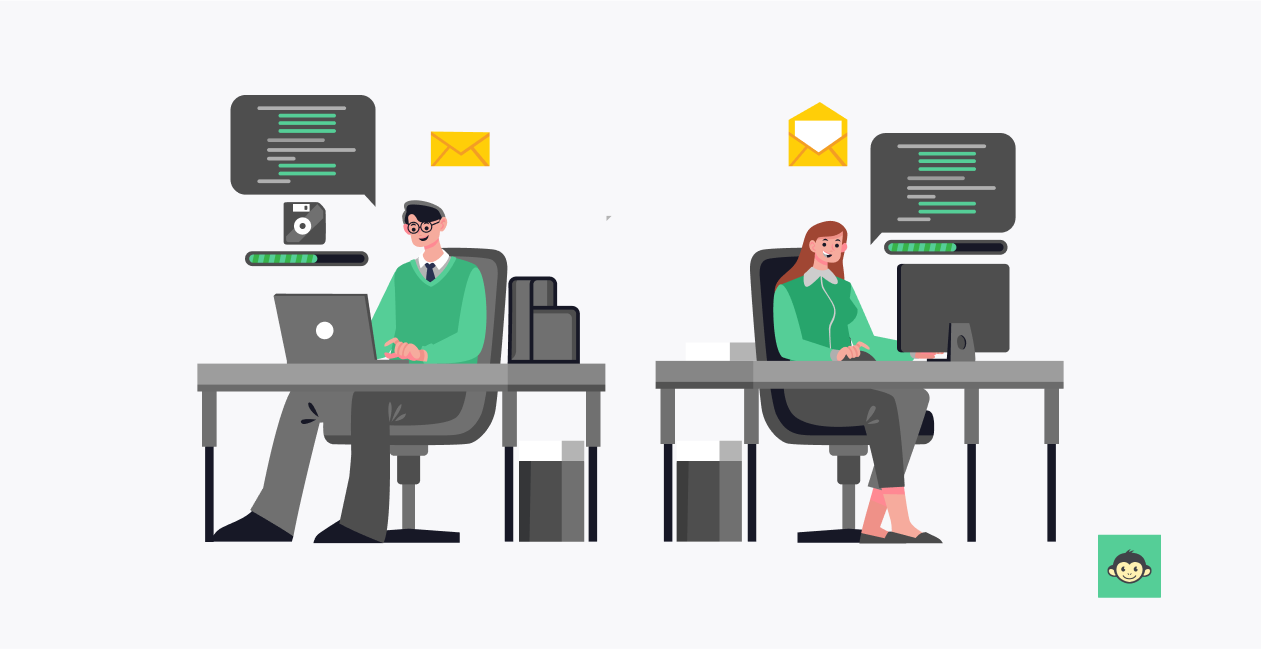
Let's understand how DEX assessment works. It's like taking a health checkup for your organization's employees digital experience and well-being. Here's a simplified breakdown:
- Survey and feedback: To assess DEX, organizations often start by gathering feedback from employees. This can be done through surveys, interviews, or feedback forms.
- Data collection: The data collected is a mix of quantitative (scores, ratings) and qualitative (comments, suggestions) information. It can cover aspects like usability of tools, ease of access, and overall satisfaction.
- Analysis: Experts or specialized software analyze this data to identify trends, pain points, and areas where improvements are needed. They may use key performance indicators (KPIs) to measure DEX effectiveness.
- Benchmarking: The findings are compared against industry benchmarks or previous assessments to understand where your organization stands in terms of DEX.
- Action plan: Based on the assessment, an action plan is developed. This could involve improving existing tools, introducing new ones, or enhancing training and support for it teams.
- Implementation: The action plan is put into motion. This may involve software upgrades, employee training, or changes in digital processes.
- Continuous monitoring: DEX assessment is not a one-time thing. It's an ongoing process. Continuous monitoring helps organizations track progress and adapt to changing needs.
7 Advantages of digital employee experience
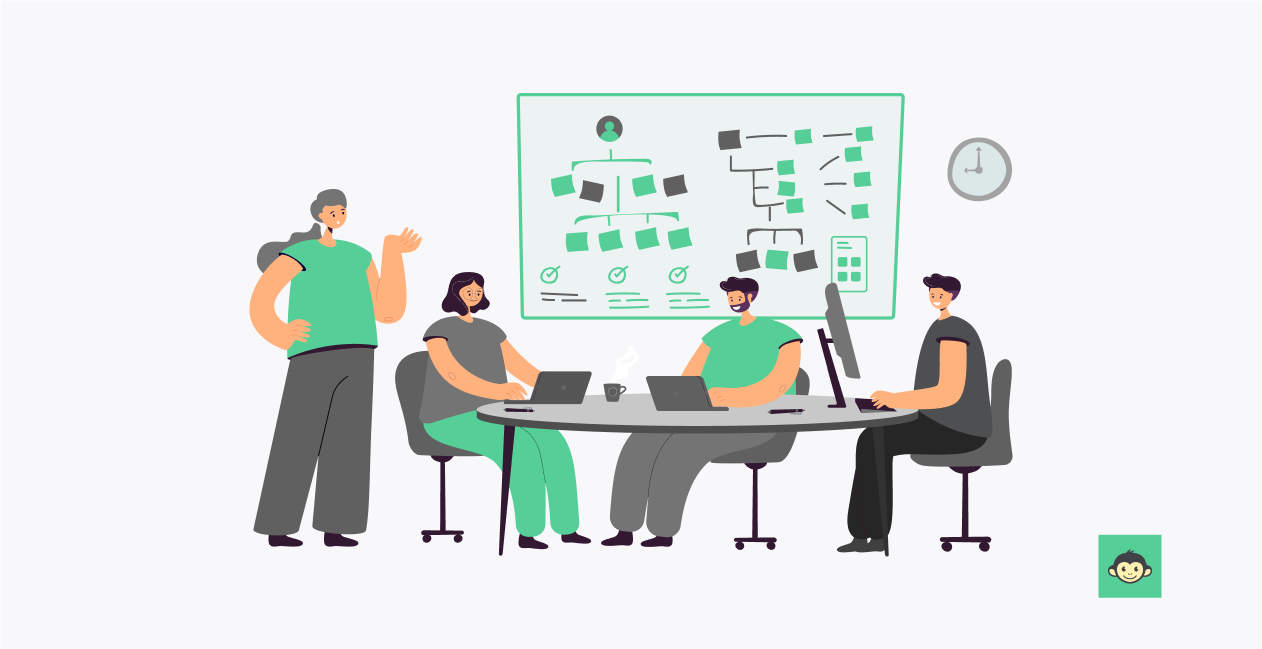
1. Enhanced productivity
When employees have a seamless digital experience, they spend less time dealing with technical issues and more time on productive tasks. This can lead to a substantial boost in overall employee sentiment and productivity.
2. Improved employee engagement
Engaged employees are more likely to stay with the company. DEX that aligns with employees' needs and preferences fosters a sense of belonging and engagement.
3. Reduced employee turnover
A positive DEX can be a key factor in retaining top talent. High turnover rates are costly, and investing in DEX can help reduce them.
4. Cost savings
Efficient digital processes can lead to cost savings. For instance, streamlined HR processes reduce administrative overhead.
5. Better customer experience
Satisfied employees are more likely to provide excellent customer service. DEX indirectly impacts customer experience by improving employee morale and efficiency.
6. Competitive advantage
Organizations with superior DEX gain a competitive edge. They attract top talent, offer better customer service, and are more agile in adapting to changing market conditions.
7. Data-driven decision making
DEX assessment provides valuable insights. By analyzing employee feedback and DEX metrics, organizations can make data-driven decisions to further enhance the digital employee experience solutions themselves.
How to create the perfect digital employee experience framework?
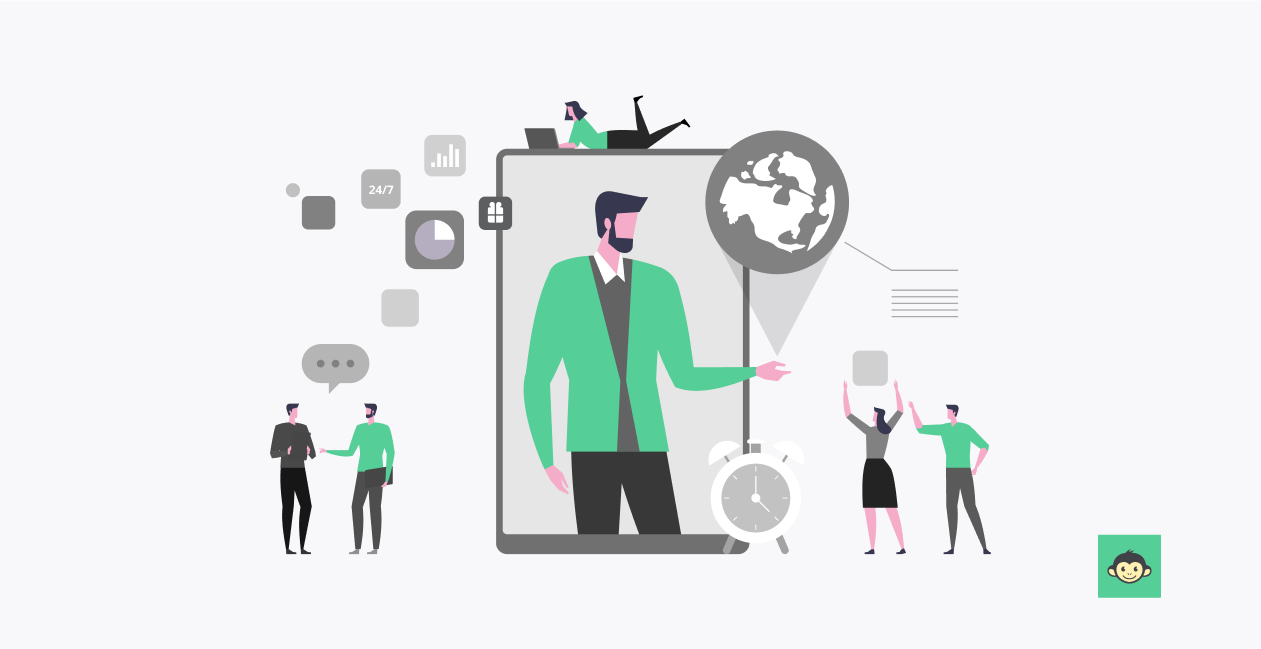
Now that we understand the significance of digital employee experience (DEX) assessment, let's explore how to create a robust DEX framework. Think of it as crafting a blueprint for building a positive DEX. Here's how to get started:
Define your goals
Begin by identifying what you want to achieve with your DEX efforts. Is it improved employee productivity, higher employee satisfaction, or something else? Your goals will shape your DEX framework.
Employee feedback
Continuously gather feedback from your employees. Understand their pain points, preferences, and needs. This data will be the foundation of your framework.
Identify key touchpoints
Map out the critical digital touchpoints in your employees' journey. This includes onboarding, daily tasks, collaboration tools, and support systems.
Benchmark against best practices
Study industry best practices and compare your current DEX against them. This will help you identify areas for improvement.
Set KPIs
Define key performance indicators (KPIs) to measure the success of your DEX framework. These could include metrics like user satisfaction scores, response times, or task completion rates.
Technology stack
Ensure your technology stack aligns with your DEX goals. This might involve upgrading existing tools or investing in new ones.
Training and support
Provide training and support to ensure employees can make the most of the digital tools available to them. Make resources easily accessible to empower employees.
Iterate and improve
DEX is an ongoing process. Regularly revisit your framework, analyze data, and make improvements based on feedback and changing needs.
What are the digital employee experience benchmarks you should know about?
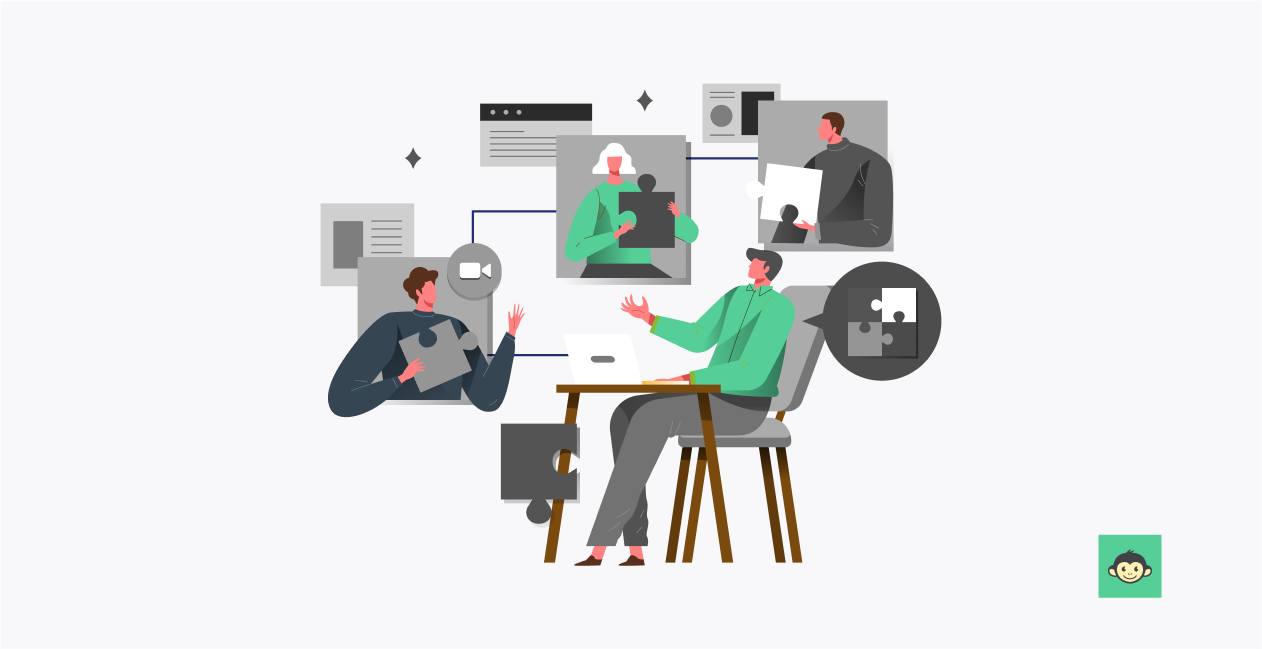
Measuring the success of your DEX initiatives requires benchmarks to compare against. Here are some key benchmarks you should be aware of:
User satisfaction scores
Regularly assess user satisfaction through surveys or feedback forms. Aim for high satisfaction scores and track improvements over time.
Task efficiency
Measure the time it takes for employees to complete common tasks. A well-optimized DEX should lead to faster task completion.
Employee retention
Monitor your employee turnover rate. A positive DEX is likely to result in lower turnover and higher retention rates.
Productivity metrics
Analyze productivity metrics like the number of tasks completed per day or the time spent on each task. A well-designed DEX should lead to increased productivity.
IT support requests
Keep an eye on the volume of the IT department for support requests. A better DEX should reduce the need for technical assistance.
Onboarding success
Measure how quickly new employees become proficient in using digital tools. A smooth onboarding process is a sign of a positive DEX.
Collaboration and communication
Track the usage of collaboration tools and the effectiveness of communication within your organization. Improved collaboration is a key outcome of a good DEX.
Understanding and regularly monitoring these benchmarks will help you gauge the impact of your DEX efforts and make data-driven decisions for continuous improvement.
13 Digital employee experience best practices to follow
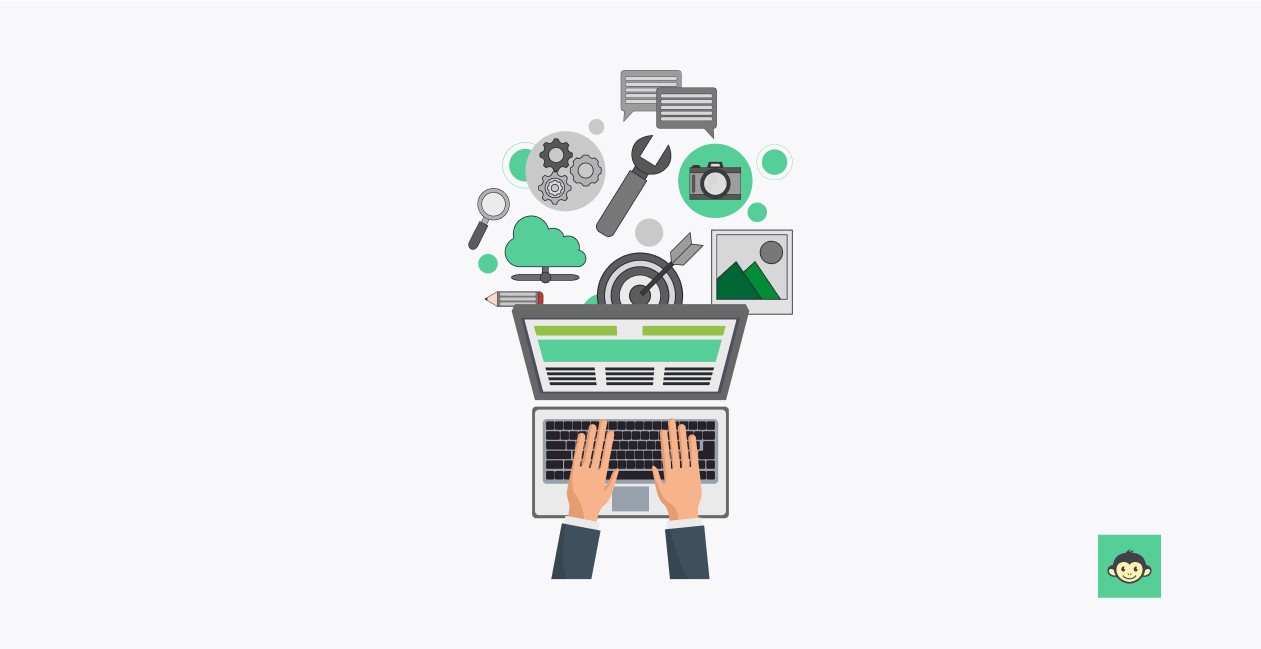
- User-centric design: Design digital tools and interfaces with the user's experience in mind. Ensure they are intuitive, easy to navigate, and aesthetically pleasing.
- Personalization: Tailor digital experiences to individual employee preferences whenever possible. Customizable dashboards, settings, and notifications can go a long way.
- Mobile accessibility: In today's mobile world, ensure that your digital tools and platforms are accessible and optimized for mobile devices.
- Seamless onboarding: Create a streamlined onboarding process that helps new employees quickly become proficient with your digital tools and systems.
- Continuous training: Offer ongoing training and support to help employees stay up-to-date with new tools and features. Provide resources and learning opportunities.
- Feedback channels: Establish clear channels for employees to provide feedback and suggestions for improving the digital experience. Actively listen and respond to their input.
- Integration: Ensure that digital tools are integrated to minimize data silos and make it easy for employees to switch between them without disruptions.
- Cybersecurity awareness: Train employees on cybersecurity best practices to enable employees protect both the organization and individual data from cyber threats.
- Data privacy: Respect and protect employee data privacy. Be transparent about data usage and security measures.
- Performance monitoring: Use analytics and monitoring tools to track the performance of digital tools and business processes. Identify and address issues promptly.
- Employee wellbeing: Consider the impact of digital tools workplace technology on employee wellbeing. Encourage breaks, limit after-hours notifications, and promote a healthy work-life balance.
- Collaboration tools: Invest in collaboration tools that facilitate remote and in-person teamwork. Ensure they support real-time communication and file sharing.
- Accessibility: Ensure that digital tools, human resources and content are accessible to employees with disabilities, following accessibility standards like WCAG.
By adhering to these DEX best practices, you can create an environment where employees are not only productive but also satisfied with their digital experiences at work. Remember that DEX is an ongoing journey of improvement, so continually assess and adjust your strategies to meet evolving needs.
What are the digital employee experience KPIs you should be aware of?
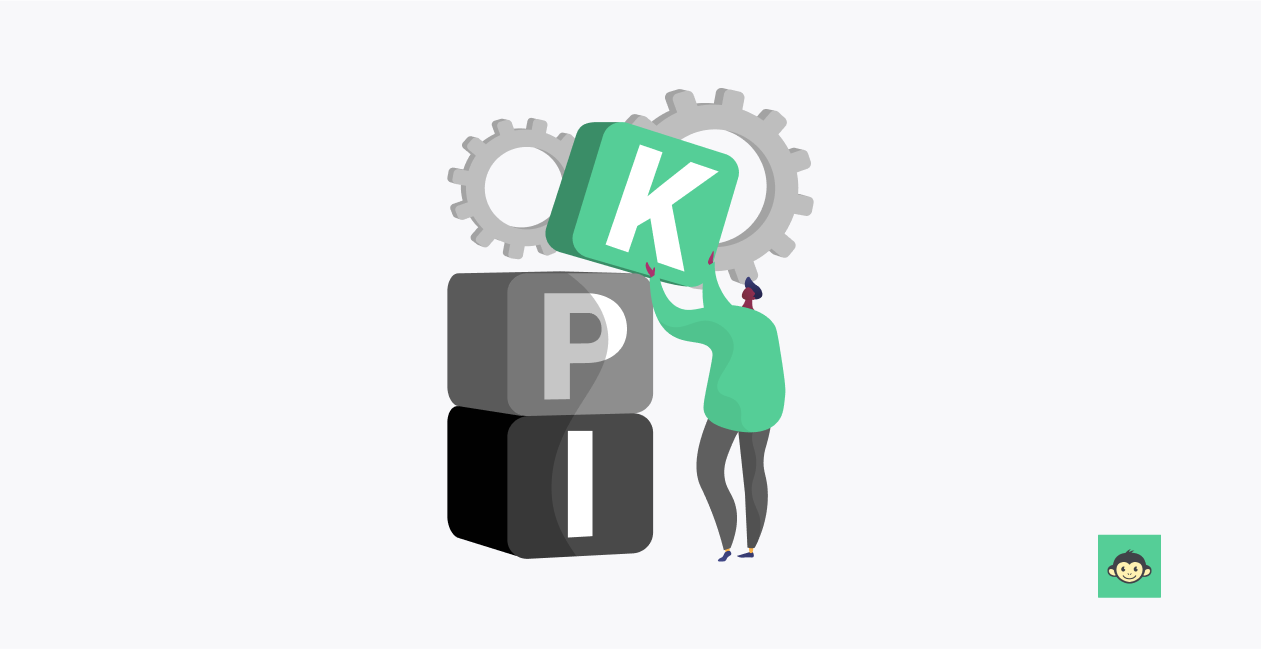
When it comes to measuring the success of your own digital transformation and employee experience (DEX) initiatives, key performance indicators (KPIs) are your guiding lights. These KPIs provide When it comes to measuring the success of your digital employee experience (DEX) initiatives, key performance indicators (KPIs) are your guiding lights.
These KPIs provide valuable insights into how well your organization is delivering on the promise of a positive DEX. Here are some essential DEX KPIs to keep a close eye on:
- User satisfaction scores: Regular survey enables employees to gauge their satisfaction with the digital tools and systems they use. High satisfaction scores indicate a positive dex.
- Task efficiency: Measure the time it takes for employees to complete common tasks. A well-optimized dex should lead to quicker task completion.
- Employee retention rate: Monitor your employee turnover rate. A strong dex can contribute to higher retention rates by keeping employees engaged and satisfied.
- Productivity metrics: Analyze productivity metrics such as the number of tasks completed per day or the time spent on each task. Improved productivity is a hallmark of a good dex strategy.
- IT support requests: Keep track of the volume of it support requests. A better dex should lead to reduced support needs, indicating that employees can handle digital tools more independently.
- Onboarding success: Measure how quickly new employees become proficient with your digital tools. A smooth onboarding process is indicative of a positive dex.
- Collaboration and communication metrics: Track the usage of collaboration tools and assess the effectiveness of communication within your organization. A positive dex fosters better collaboration.
- Adoption rates: Monitor the adoption rates of new digital tools and features. High adoption rates suggest that employees find value in the offerings.
- Error rates: Measure the frequency of errors or issues encountered while using digital tools. A lower error rate indicates a more user-friendly dex.
- Accessibility compliance: Ensure that digital tools and content adhere to accessibility standards, such as WCAG. High compliance rates reflect an inclusive dex.
- Engagement analytics: Utilize engagement analytics to track how often and how deeply employees engage with digital tools and platforms. Higher engagement is a positive dex indicator.
- Feedback and suggestions: Monitor the quantity and quality of feedback and suggestions provided by employees. An increase in constructive feedback can indicate that they are engaged with the dex improvement process.
17 Digital employee experience questionnaires to ask at work
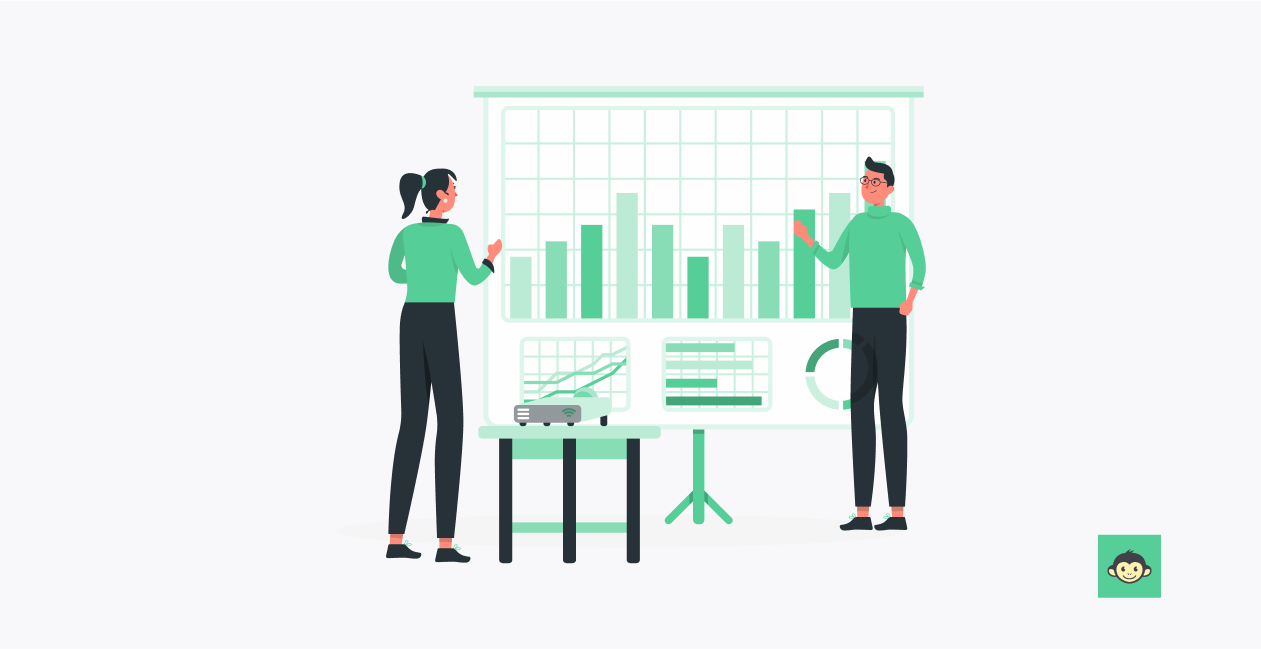
Understanding the digital employee experience important and perspective is crucial for optimizing the digital employee experience. Here are 17 digital employee experience questions you can incorporate into surveys or questionnaires:
- How satisfied are you with the digital tools and systems you use at work?
- Do you find it easy to navigate our digital platforms and applications?
- Have you encountered any challenges while using our digital tools? If so, please describe.
- How would you rate your overall digital onboarding experience when you joined the company?
- Are you provided with sufficient training and support for using our digital tools effectively?
- Do you feel that our digital tools help you be more productive in your role?
- Have you experienced any cybersecurity concerns or issues with digital security at work?
- Are you comfortable with the privacy measures we have in place for your digital data?
- How often do you use collaboration tools to communicate and work with your colleagues?
- Do you receive too many notifications from digital tools? How can we improve this?
- Are there any accessibility challenges you face when using our digital tools?
- How satisfied are you with the mobile-friendliness of our digital platforms?
- Have you ever had difficulties integrating data or processes between different digital tools?
- Do you believe that our organization actively seeks and acts upon employee feedback regarding digital tools?
- How would you rate your overall digital work environment for remote work or flexible schedules?
- Are you aware of any new digital tools or features that could benefit your role?
- What suggestions do you have for improving our digital employee experience?
4 Digital employee experience examples
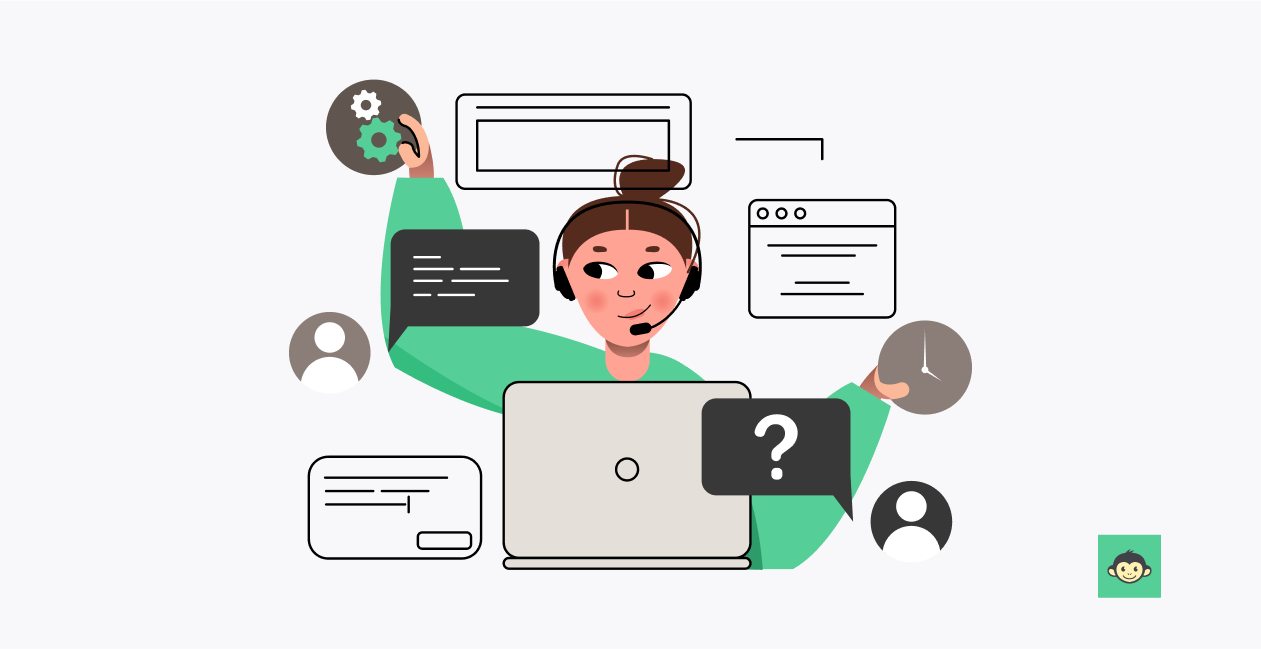
Let's dive into some real-world digital employee experience (DEX) examples to illustrate how organizations have successfully implemented DEX strategies:
Let's dive into some real-world digital employee experience (DEX) examples to illustrate how organizations have successfully implemented DEX strategies:
Example 1: Slack at Shopify
Shopify, an e-commerce platform, uses Slack for seamless communication and collaboration. With various channels and integrations, Shopify ensures that employees can easily access information, share updates, and connect with colleagues, fostering a culture of open communication and teamwork.
Example 2: Microsoft Teams at Siemens
Siemens, a global technology company, leverages Microsoft Teams for remote work and collaboration. The platform integrates with other Microsoft tools, making it easy for employees to schedule meetings, share documents, and collaborate in real time, whether they're in the office or working remotely.
Example 3: Salesforce at T-Mobile
T-Mobile, a telecommunications company, uses Salesforce as a customer relationship management (CRM) tool. This empowers employees to provide top-notch customer service, with a unified view of customer data and interactions, enhancing both the employee and customer experience.
Example 4: Google Workspace at HubSpot
HubSpot, a marketing and sales software company, relies on Google Workspace for productivity and collaboration. Google Workspace offers email, document sharing, and real-time editing, enabling HubSpot employees to work seamlessly together, no matter where they're located.
Conclusion
In the now digital workplace age, the employee experience is inseparable from technology. A well-crafted digital employee experience (DEX) not only boosts productivity but also enhances employee satisfaction and engagement.
To excel in DEX, organizations must track crucial KPIs, gather employee feedback, and implement best practices. Contact CultureMonkey to transform your organization’s feedback mechanisms and make a happier workplace!



